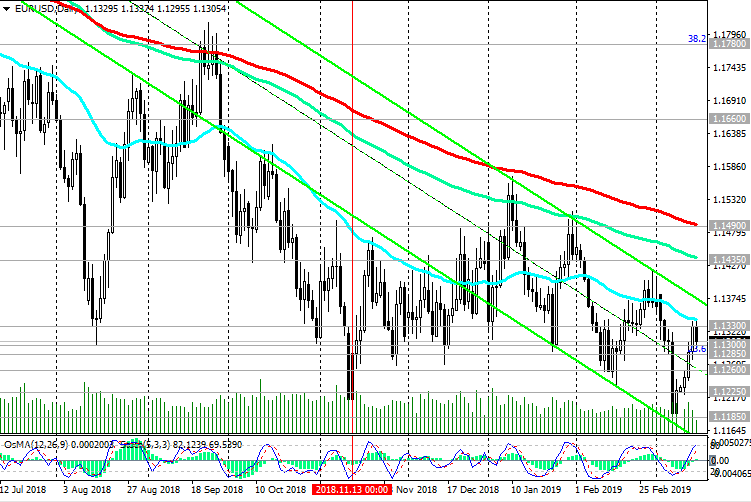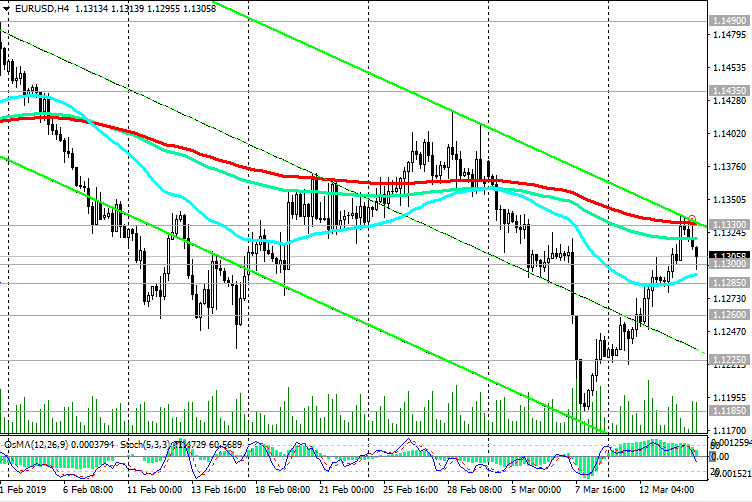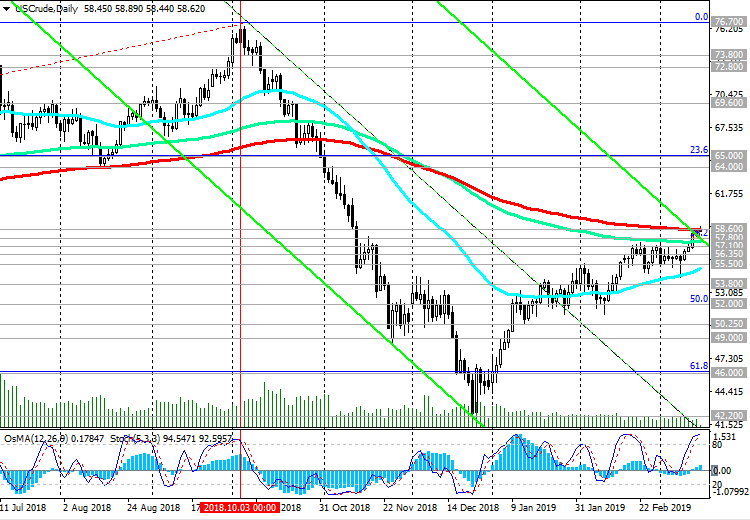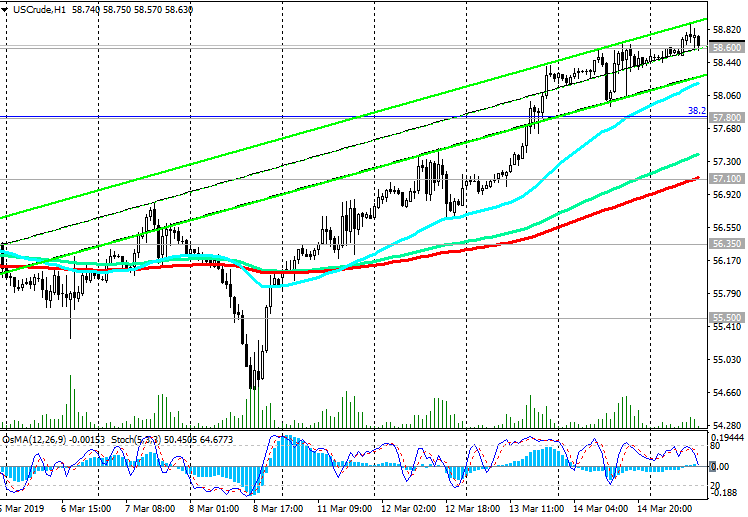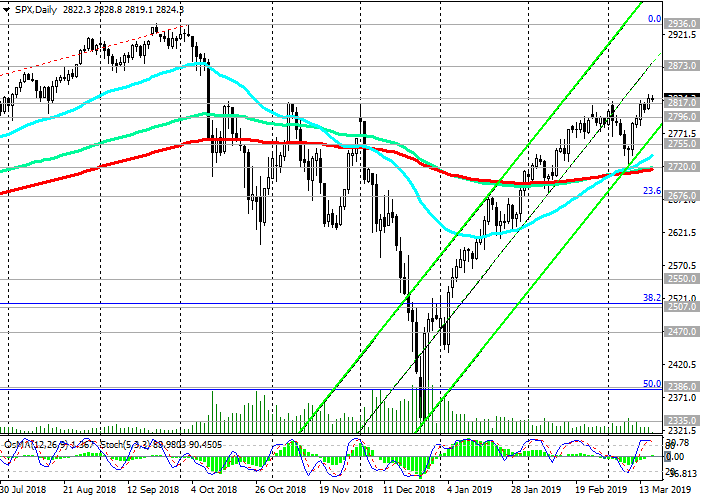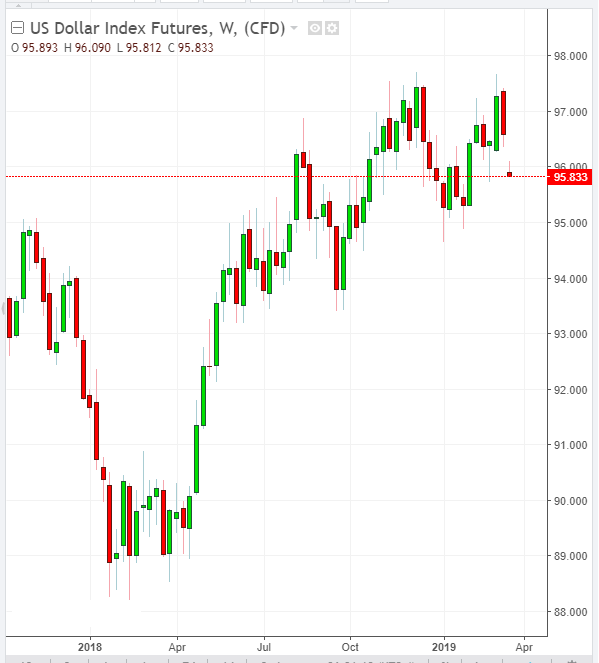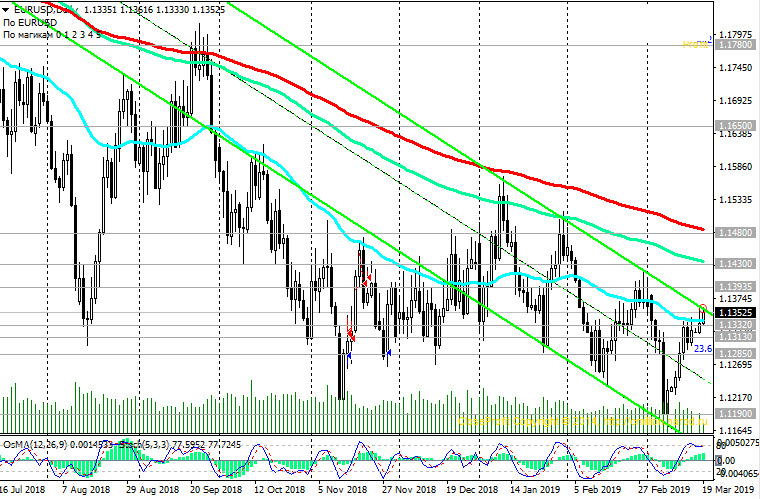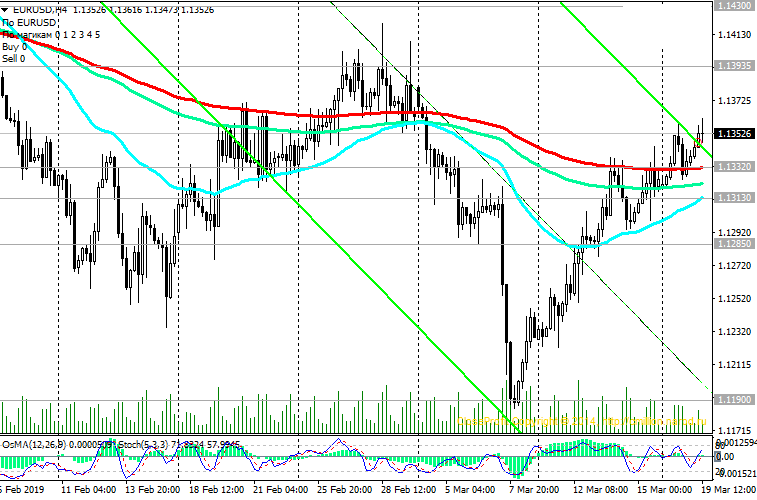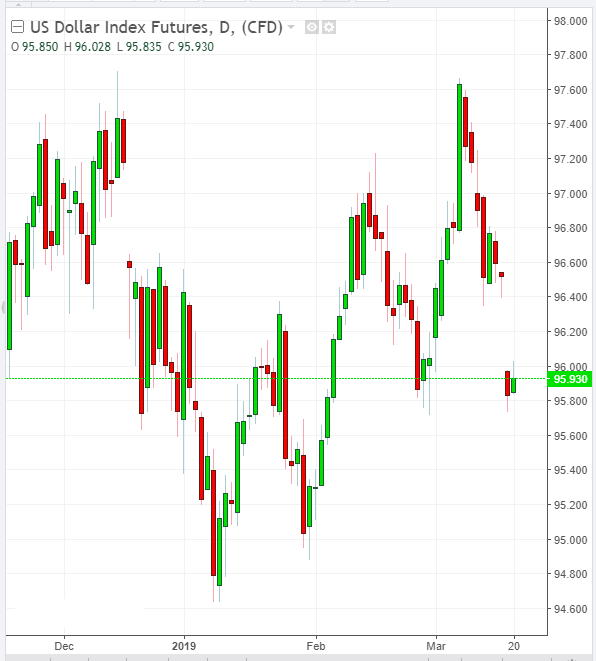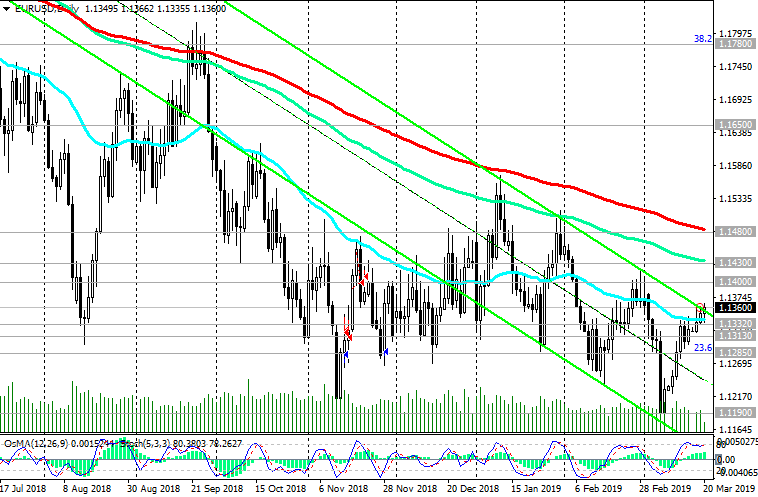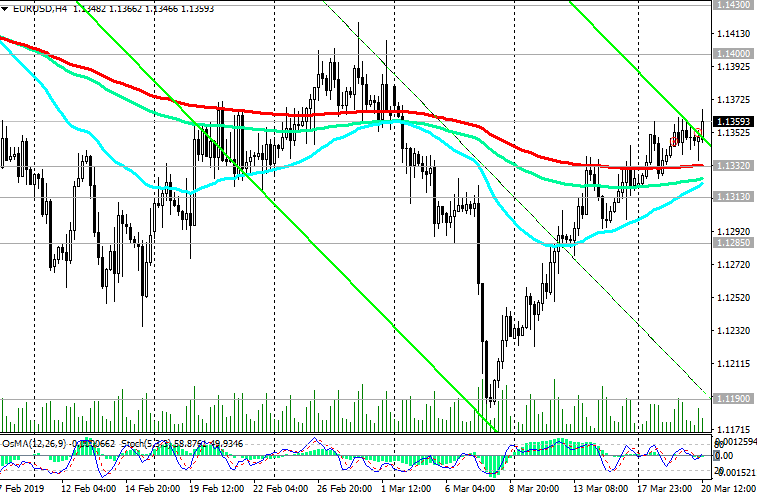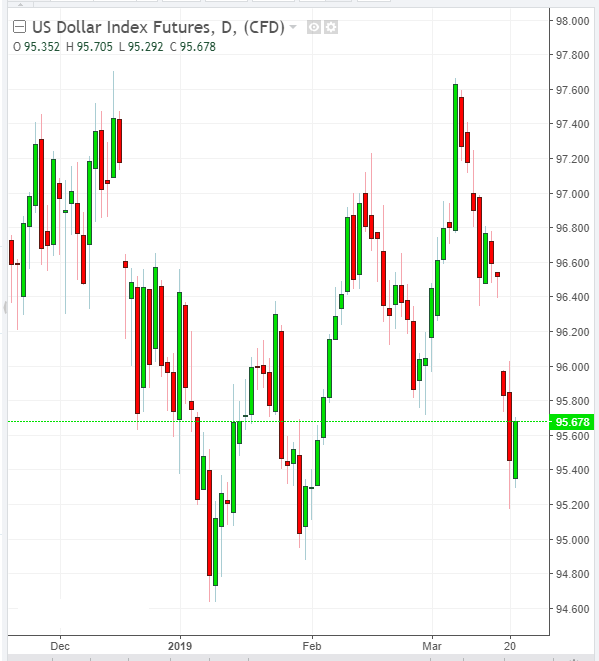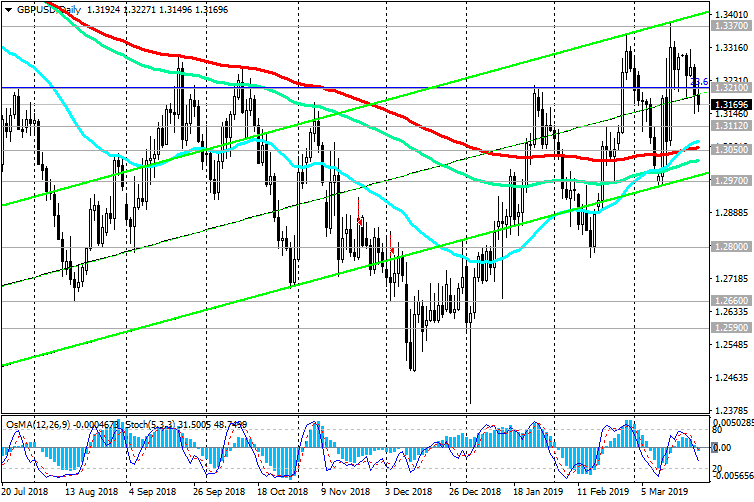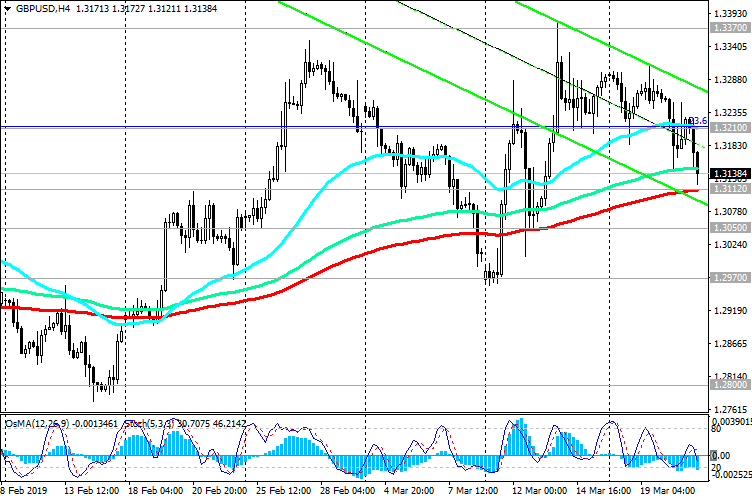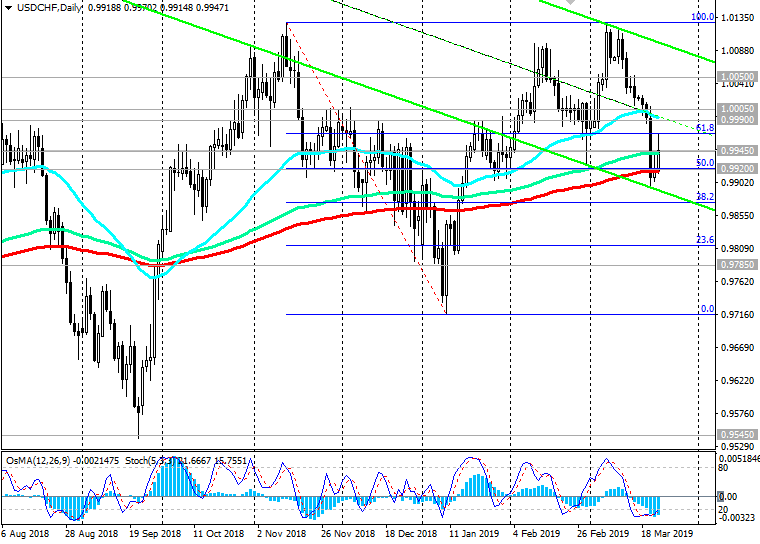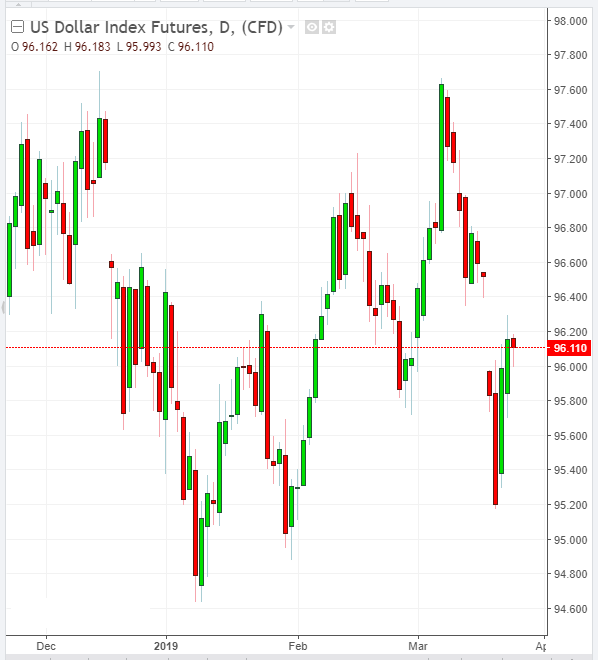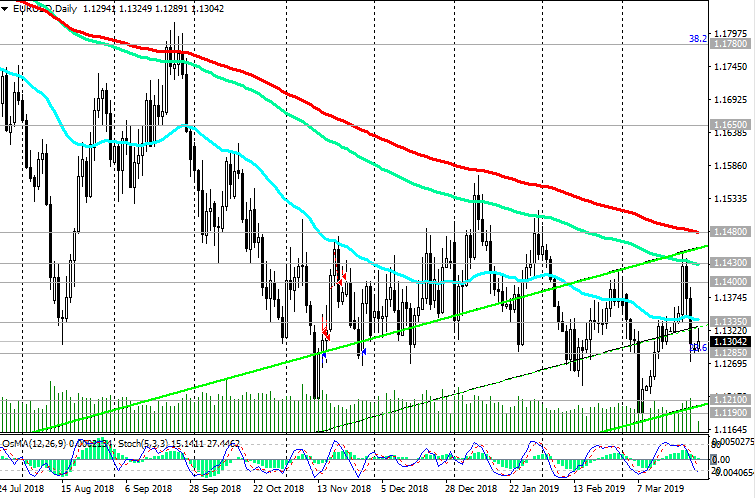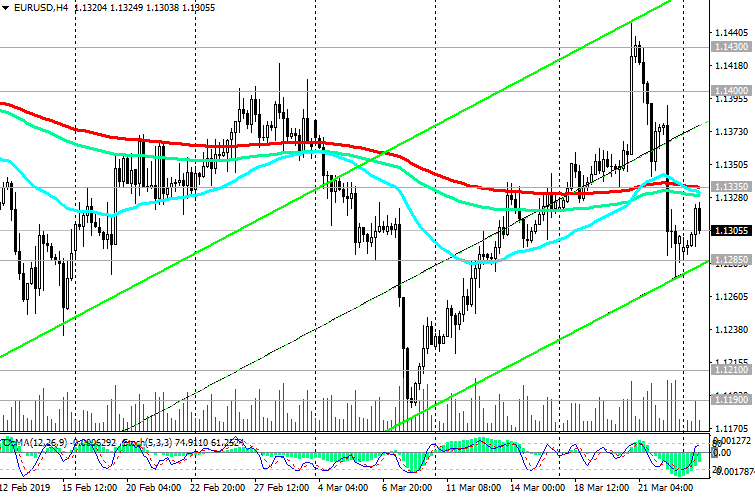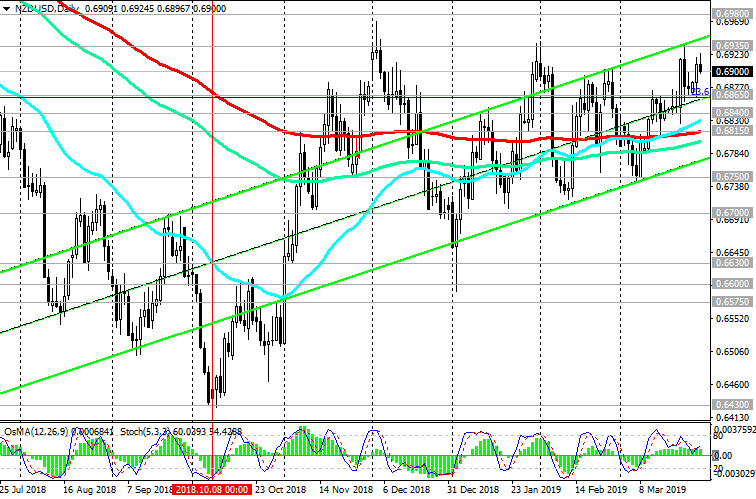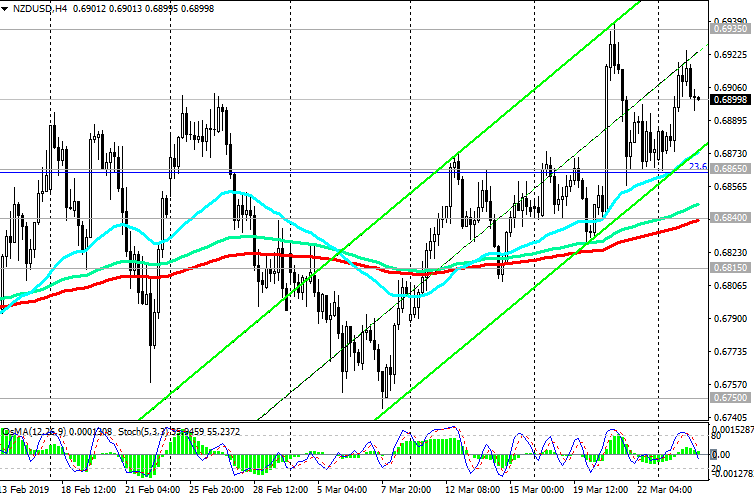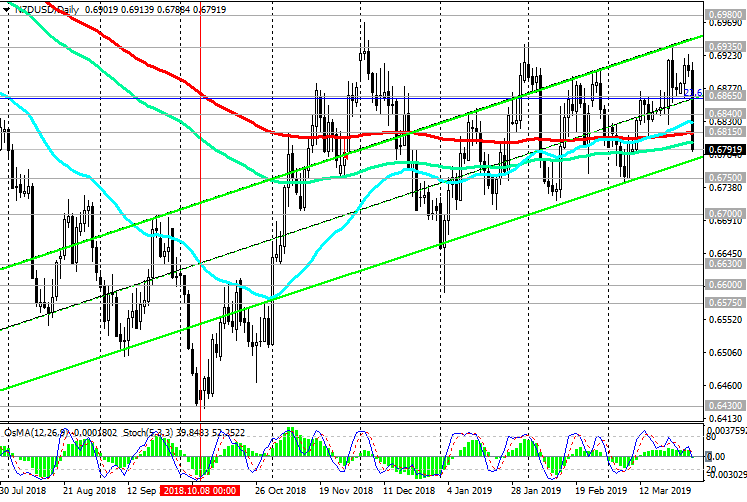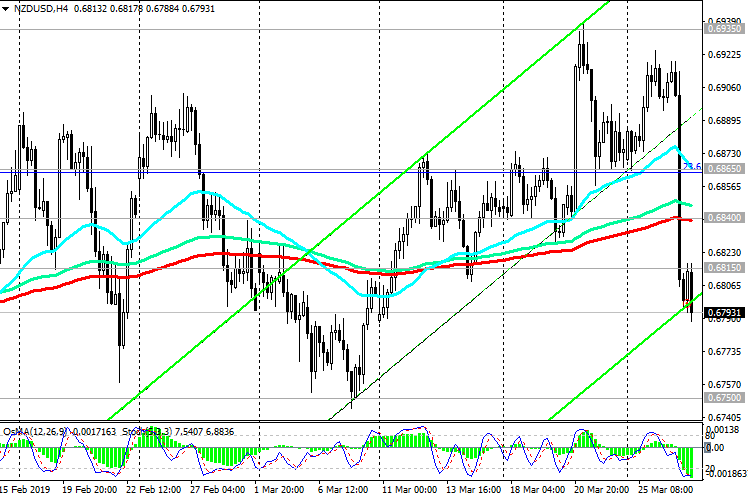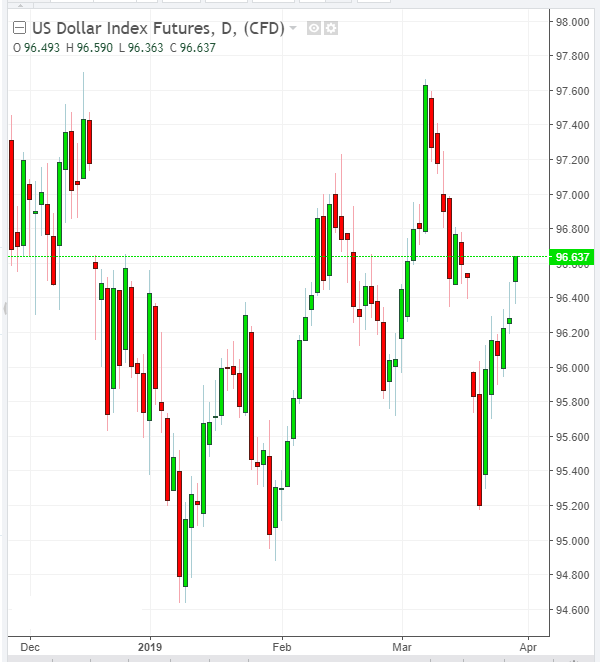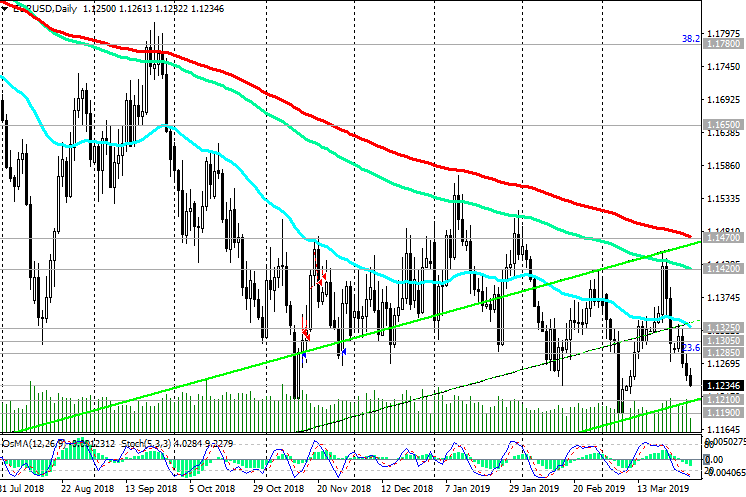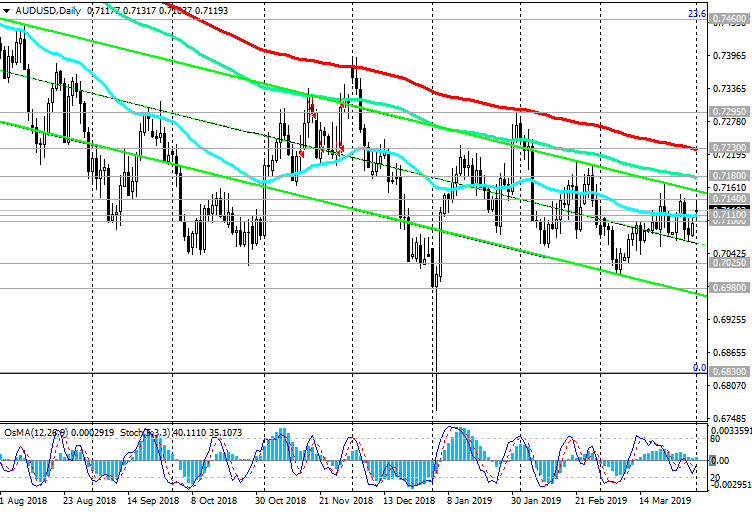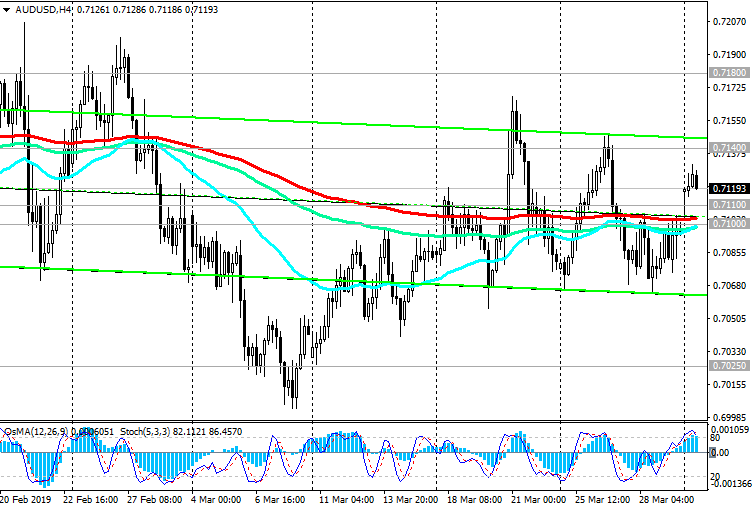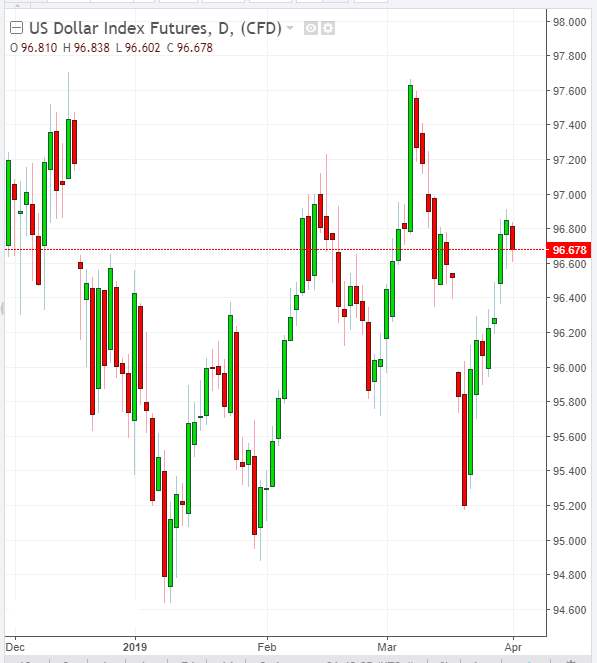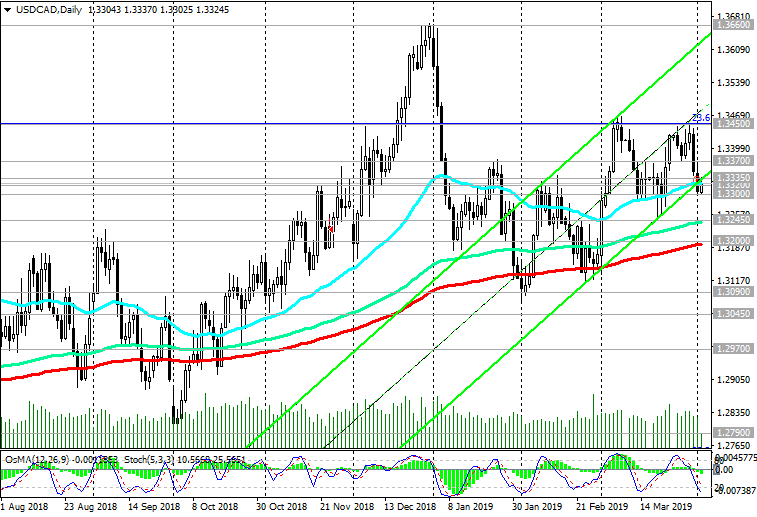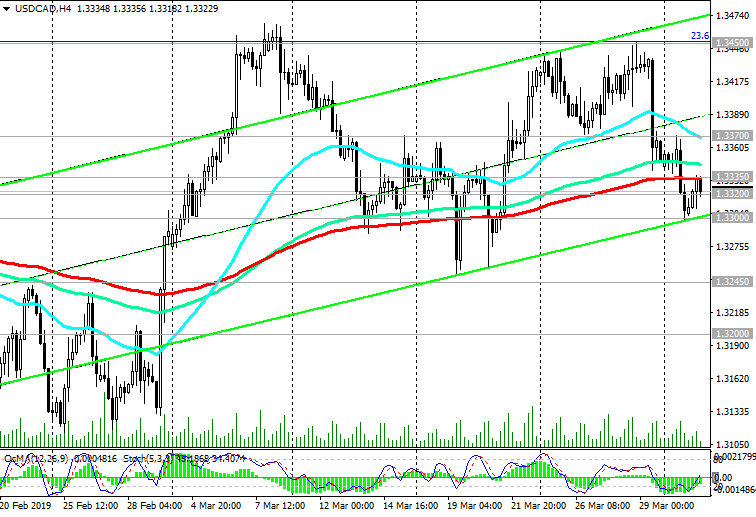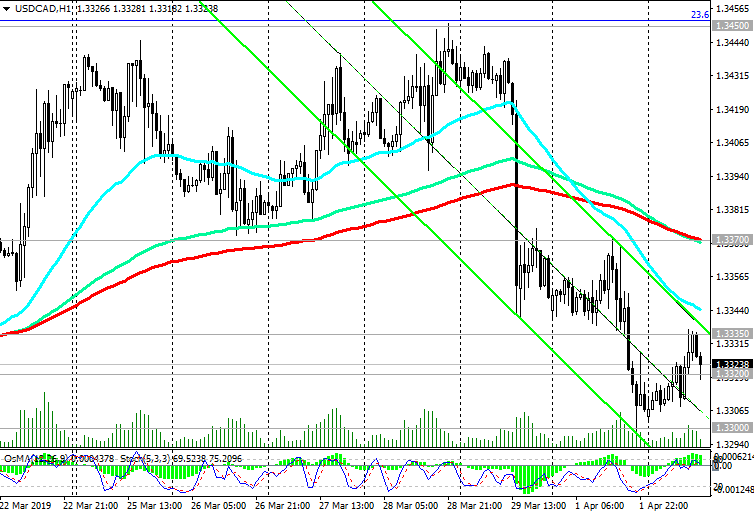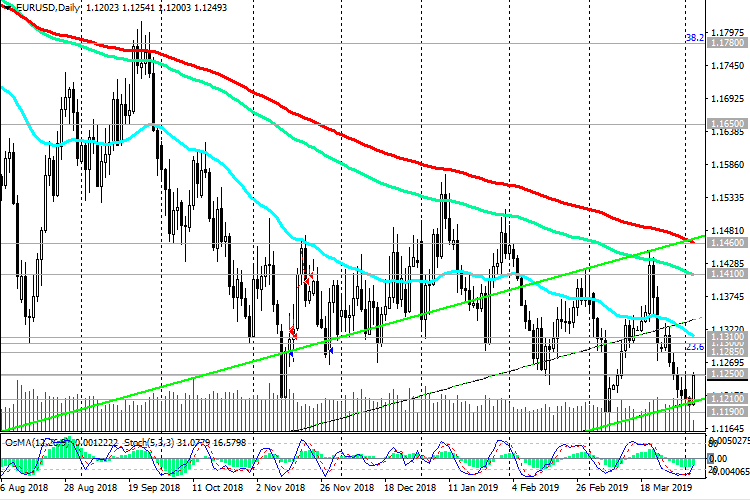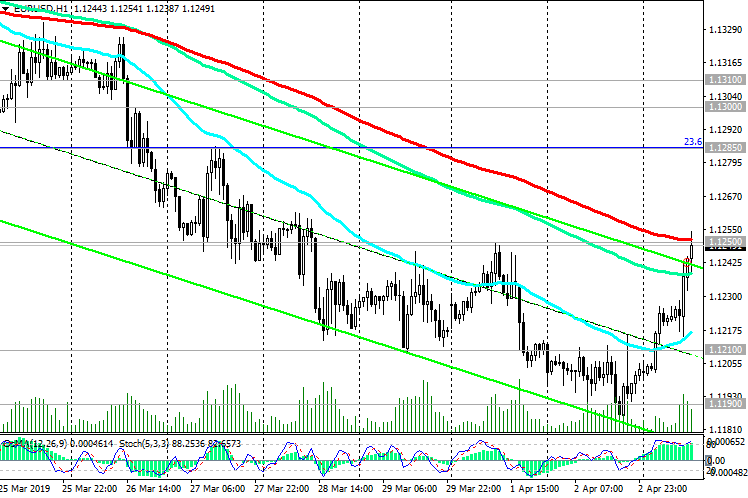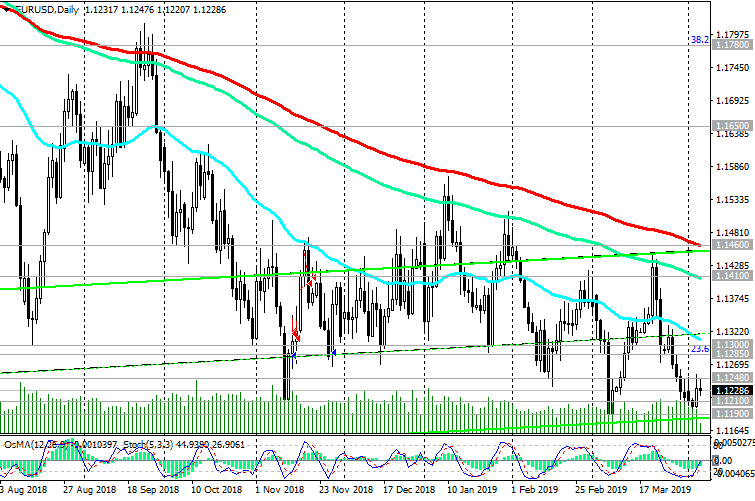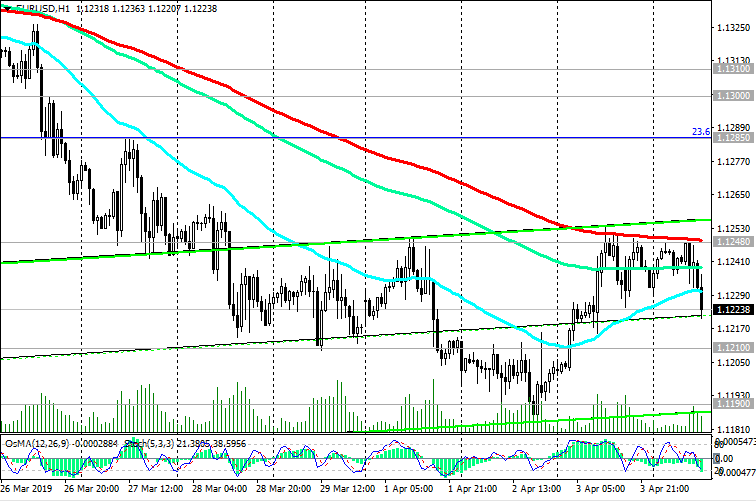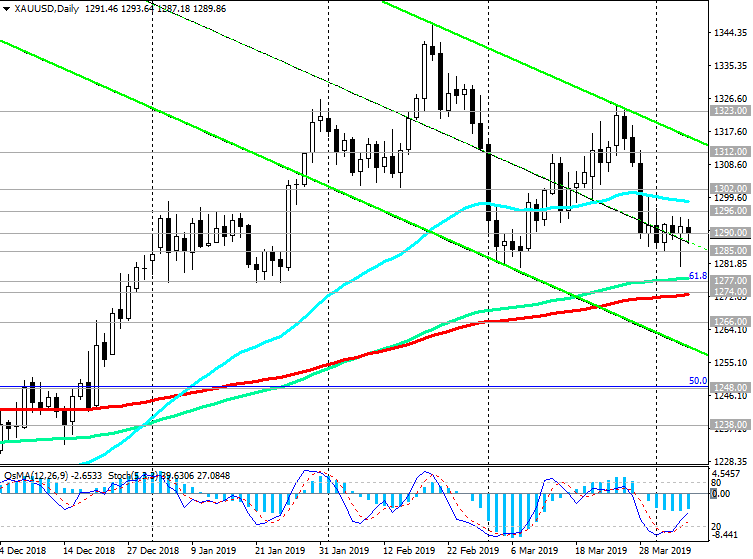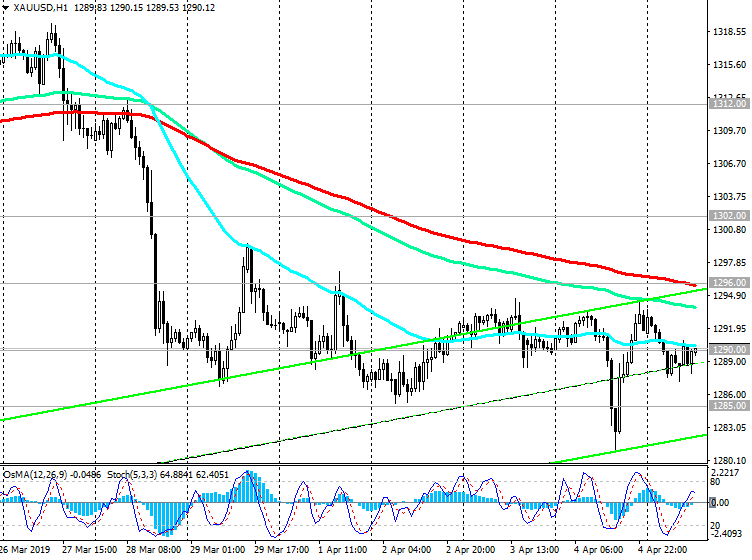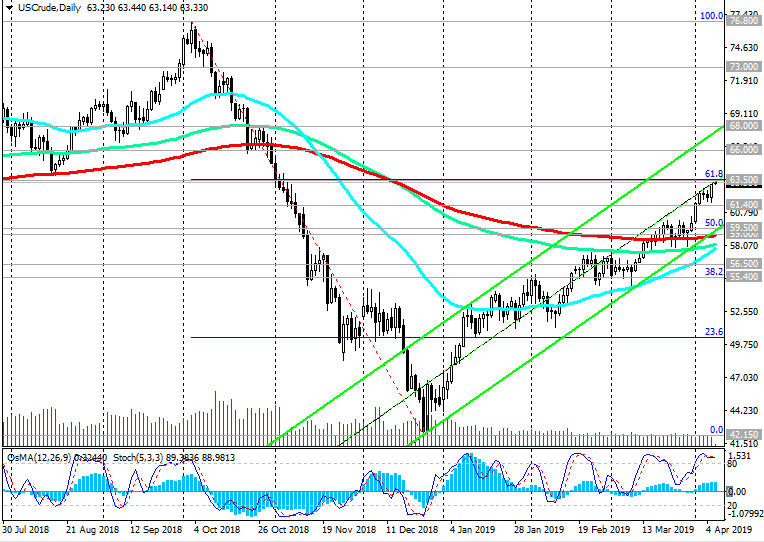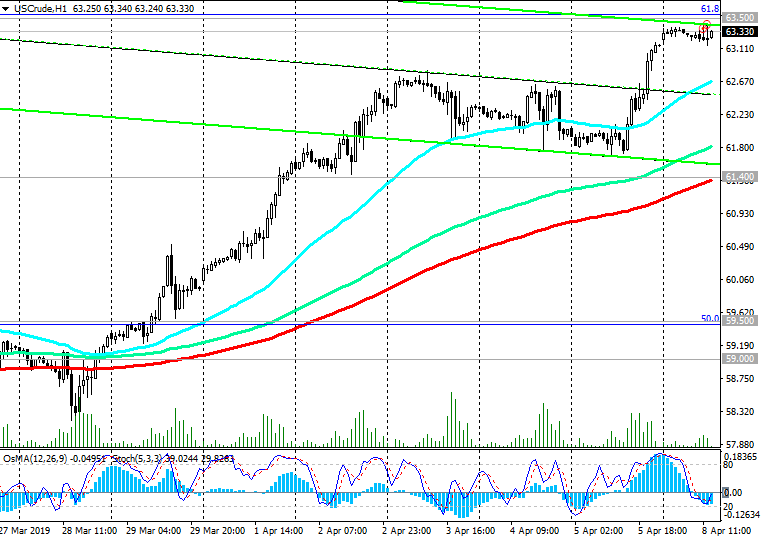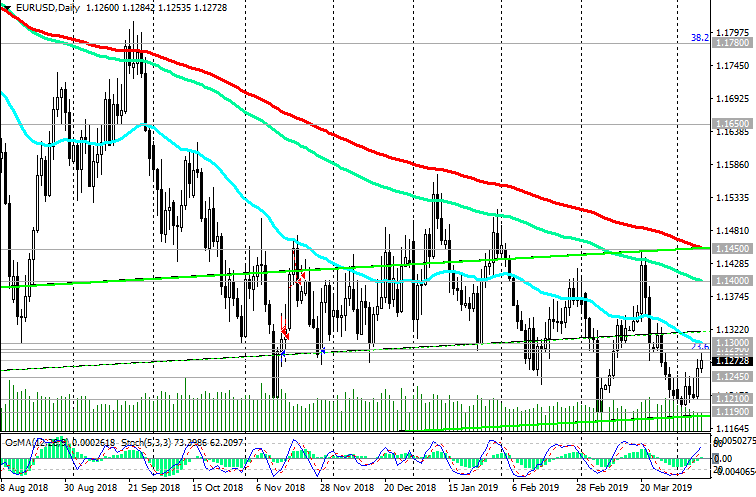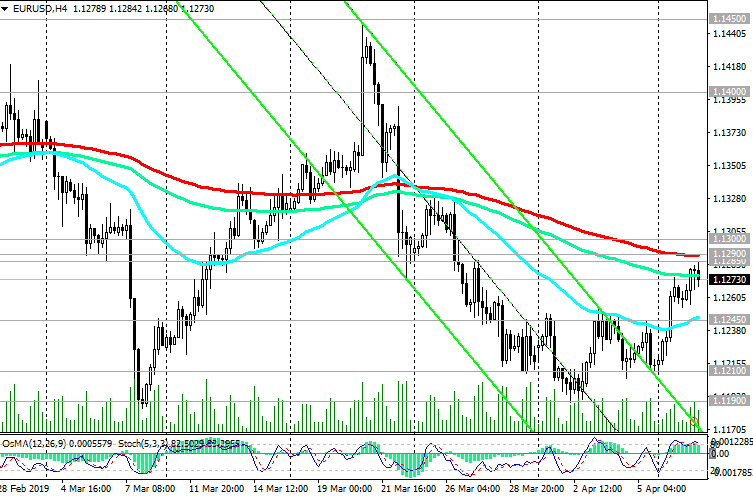TifiaFX
Established member
- Messages
- 641
- Likes
- 0
GBP/USD: Current Dynamics
13/03/2019
The pound is regaining its position after a sharp fall on Tuesday, when the British parliament again voted against the version of the Brexit agreement proposed by Prime Minister Theresa May.
Now lawmakers on Wednesday will vote on the issue of leaving the EU on March 29 without a deal. If they vote against, then on Thursday there will be a vote on the question of postponing the exit date from March 29 to a later date.
The GBP / USD maintains a positive trend, trading above key support levels of 1.3050 (ЕМА200 on the daily and 4-hour charts), 1.3000 (ЕМА144 on the daily chart).
In case of continued growth and after the breakdown of the resistance level of 1.3210 (Fibonacci level 23.6% of the correction to the decline of GBP / USD in the wave that started in July 2014 near 1.7200) GBP / USD will aim to the resistance levels 1.3300, 1.3400 (upper limit of the ascending channel on the daily chart), 1.3670 (ЕМА200 on the weekly chart).
Short positions will become relevant after the GBP / USD decline to a zone below the support level of 1.3000.
The signal for the resumption of sales of GBP / USD will be the breakdown of the short-term support level of 1.3123 (ЕМА200 on the 1-hour chart).
Support Levels: 1.3123, 1.3050, 1.3000, 1.2800, 1.2785, 1.2700, 1.2670, 1.2600, 1.2485, 1.2400
Resistance Levels: 1.3210, 1.3300, 1.3400, 1.3670
Trading Recommendations
Sell Stop 1.3090. Stop Loss 1.3170. Take-Profit 1.3050, 1.3000, 1.2800, 1.2785, 1.2700, 1.2670, 1.2600, 1.2485, 1.2400
Buy Stop 1.3170. Stop Loss 1.3090. Take-Profit 1.3210, 1.3300, 1.3400, 1.3670
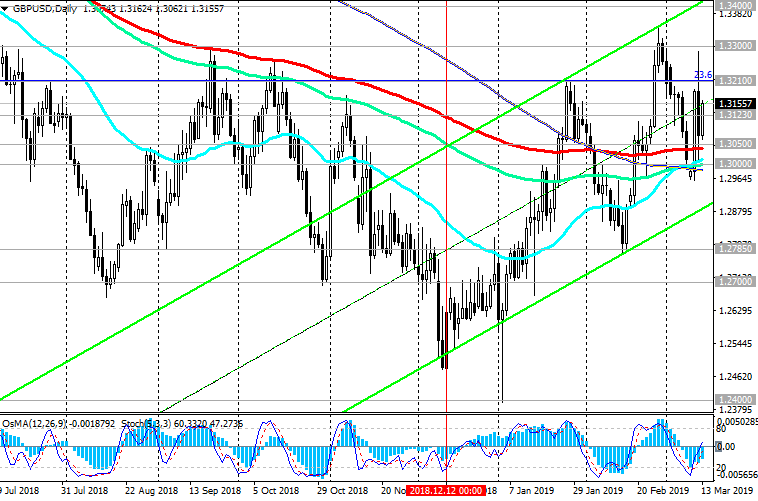

13/03/2019
The pound is regaining its position after a sharp fall on Tuesday, when the British parliament again voted against the version of the Brexit agreement proposed by Prime Minister Theresa May.
Now lawmakers on Wednesday will vote on the issue of leaving the EU on March 29 without a deal. If they vote against, then on Thursday there will be a vote on the question of postponing the exit date from March 29 to a later date.
The GBP / USD maintains a positive trend, trading above key support levels of 1.3050 (ЕМА200 on the daily and 4-hour charts), 1.3000 (ЕМА144 on the daily chart).
In case of continued growth and after the breakdown of the resistance level of 1.3210 (Fibonacci level 23.6% of the correction to the decline of GBP / USD in the wave that started in July 2014 near 1.7200) GBP / USD will aim to the resistance levels 1.3300, 1.3400 (upper limit of the ascending channel on the daily chart), 1.3670 (ЕМА200 on the weekly chart).
Short positions will become relevant after the GBP / USD decline to a zone below the support level of 1.3000.
The signal for the resumption of sales of GBP / USD will be the breakdown of the short-term support level of 1.3123 (ЕМА200 on the 1-hour chart).
Support Levels: 1.3123, 1.3050, 1.3000, 1.2800, 1.2785, 1.2700, 1.2670, 1.2600, 1.2485, 1.2400
Resistance Levels: 1.3210, 1.3300, 1.3400, 1.3670
Trading Recommendations
Sell Stop 1.3090. Stop Loss 1.3170. Take-Profit 1.3050, 1.3000, 1.2800, 1.2785, 1.2700, 1.2670, 1.2600, 1.2485, 1.2400
Buy Stop 1.3170. Stop Loss 1.3090. Take-Profit 1.3210, 1.3300, 1.3400, 1.3670



